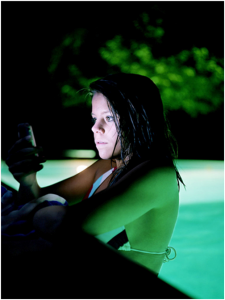
Pope John Paul II introduced the world to the “Pope-mobile.” Pope Benedict XVI’s Church of the new millennium gives “mobile” new meaning. Released only a few weeks ago, the app Confession: A Roman Catholic App, available for iPhones, iPods, and iPads, allows those who are equally devout to their smartphone as to their faith to take their penance on the go.
The app was not designed by the Catholic Church but it has received an official imprimatur from a bishop. This is like the Church’s gold seal of approval. With its penchant for bureaucracy, this certification by the Church in effect endorses the new smartphone feature as a legitimate means of practicing the faith.
The Catholic Church has been in the process of updating its image lately. The Pope is now on YouTube, and he recently issued a statement encouraging the flock to make use of modern technology for religious endeavors, albeit with a caveat of caution. “Entering cyberspace can be a sign of an authentic search for personal encounters with others,” he said, “provided that attention is paid to avoiding dangers such as enclosing oneself in a sort of parallel existence, or excessive exposure to the virtual world.” (Reuters, Jan. 24)
About the same time this app came out, Transmediale 2011 here in Berlin explored the very question of what it really means to live enclosed in a virtual world. What happens to our definition of the body as we invest growing trust in the communicative ability of our interfaces? Anyone who has had a video chat on Skype understands that uncanny feeling of somehow being simultaneously close to a person yet also incredibly alienated. Increasingly, the interface is regarded as a body.
After momentarily forgetting the screen you’re peering into, your sympathetic gaze is suddenly arrested by digital static. The face you’ve been speaking casually with brusquely becomes clumsy and unreal. Though the reality of your laptop seems suspended while you speak to the face before you, a rude reminder is issued when the face is robbed from you without warning. The presence you’ve been engrossed in is actually a mere whirring plastic conglomerate of elegantly concealed wires. You almost feel duped when you think about the fact that you’ve been so freely sharing sincere ideas and emotions with such a completely unfeeling inanimate object.
These fractures of experience, these rapid alternating moments of blindness, of punctum—where reality clicks from faith in a person to the deception of a machine—blur the margin of human and interface just as much as they starkly remind us of the distinction. The fact that we feel surprise when our interlocutor’s face vanishes into the fog of cyberspace indicates precisely just how potent the effect of the illusion actually is.
So what happens when one’s access to the divine is mediated by an iPhone? For the record, the app is designed for the purpose of preparing a penitent for confession, not to act as a substitute for the actual ritual. The app provides users with a checklist of the Ten Commandments and a short list of questions related to each. There is, however, a step-by-step guide through the confession ritual.
Though the Vatican does not share the following speculation, this ready-made sacrament does enable someone susceptible to the Deadly Sin of Sloth and a penchant for self-manipulation to perform a DIY faux-confessional, with only the artificial company and oversight of their mobile device.
Two familiar factors have interestingly involved themselves in this new technology. Both echo the concerns that bellowed long ago during the Reformation. First, the dependence again on an interface—one that can be transported into the home—is reminiscent of the once violent debate over the use of icons. A real magnet for controversy, though—and another issue that rings of familiarity—is the fact that there is a fee for this liturgical upgrade. The app, available through iTunes, costs $1.99.
According to a February 9 article by Reuters, Vatican spokesman Father Federico Lombardi says explicitly that this is meant to help prepare for the sacrament of confession, not act as a substitute. But despite the Vatican’s desire to impose a comfortable distance from the app, their endorsement retains the implication that this new feature does help. And this infallible opinioninsinuates that those who can afford a 4G network might have a leg up on those who do not. Suddenly, access to the elevator for that sought after condo in the sky becomes a bit more exclusive. Though not as heinously as it did with the selling of Indulgences in the 15th century, the Catholic Church is again, to a lesser degree, charging admission for salvation.
We are not all religious people, but for those who do take refuge from life’s gaping uncertainties by choosing to satiate a desire for the divine, this development poses many risks. The introduction of an app to liturgy in some ways reflects to the role of icons and the myriad other examples of our attempts to express the divine, but the trending completeness of virtuality in new technology indicates a significant departure from previous dilemmas. This warrants more serious examination.
From issues involving the intersection of phenomenology and technology to the intercession of the Church on Joe Catholic’s right to an equal opportunity savior, the Confession app brings a lot of charged issues to light. One has to ask then, in the face of all these concerns, is it possible for divine illumination to shine in the glow of an iPhone? The horrifying probability is that the emergent conversion of an analogue divine to a digital one might hopelessly damage the resolution of its already frail image.
by Logan Woods (PY ’11, USA)
